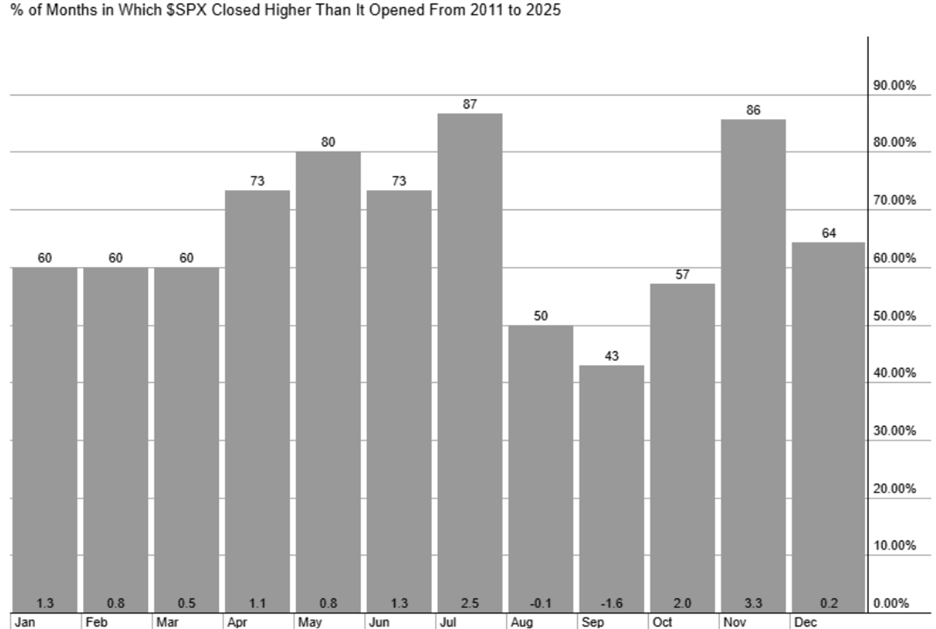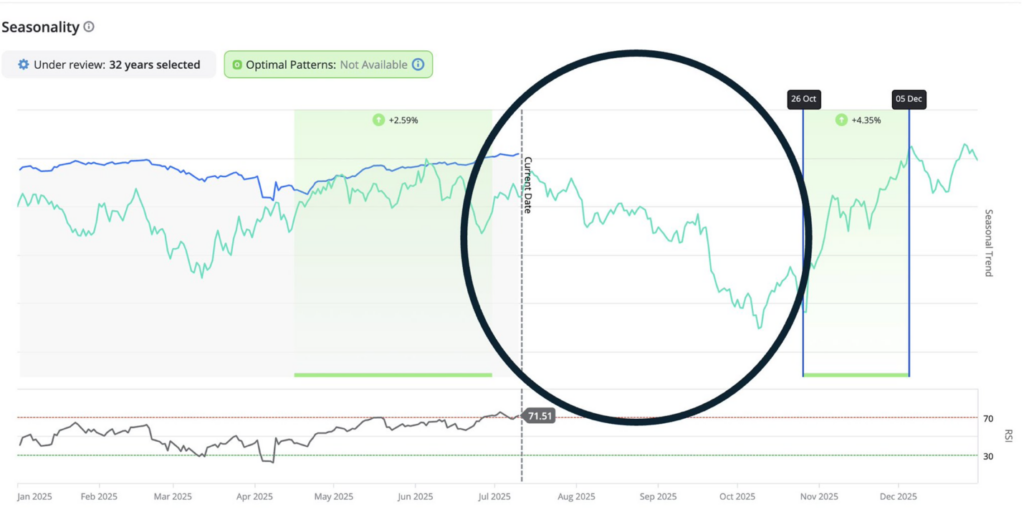Editor’s Note: For today’s insight, we’re handing the reins to Freeport Society cofounder and legendary “quant” investor Louis Navellier.
Louis has been creating computer models that have beaten the market for the past half-century.
And yesterday, he took part in a hugely popular event all about a software tool that helps you spot “green days” in stocks – calendar days when they typically go up.
It runs a staggering 50,000 tests a day to analyze every stock in the major indexes and zero in on the ones with the strongest seasonality trends…
It’s hard to believe if you haven’t seen the tool in action. But some stocks trade so consistently – rising or falling during specific windows, year after year – that you can map out a year’s worth of great trades.
If you couldn’t attend yesterday, catch Louis’ presentation here while it’s still online. Then read on for the one stock Louis would buy in August despite its well-deserved reputation as a seasonally bearish month.
The Only Stock I’d Trade This August
By Louis Navellier, Senior Investment Analyst, InvestorPlace
I hate August.
Not because of the weather – although it can be sweltering at my homes in Nevada and Florida. But because August is when much of Wall Street goes on vacation.
This means the “B team” is left in charge. And that’s where things get dicey.
Trading volume dries up, and stocks become more vulnerable to manipulation by unscrupulous short sellers and hedge funds. (Short sellers profit when stock prices fall.)
Take the 2015 “flash crash.”
On the morning of August 24, the Dow plummeted more than 1,000 points within minutes. Hundreds of stocks failed to open in an orderly fashion. And big, normally stable blue-chip funds such as the iShares Select Dividend (DVY) and Vanguard Dividend Appreciation (VIG) plunged more than 30% – even though their underlying holdings hadn’t fallen anywhere near that much.
Chaos ensued.
Stop-loss orders were triggered.
Circuit breakers kicked in.
And regular investors got crushed by pricing errors they never saw coming.
Granted, this is an extreme example. But I’d close the stock market for the month of August if I were in charge.
Unfortunately, I’m not. So, the next best thing to do is trade smartly.
Today, I’ll show you why August has a bad reputation (and rightfully so). And we’ll look at how to turn this month into one of your favorites.
As you’ll see, there’s one stock that should buck the bearish market trend as we head into the summer doldrums.
How do I know?
One of the most powerful tools I’ve seen in five decades developing and deploying “quant models” has flashed a buy signal.
Why August Is a Terrible Month for Stocks
Over the last 15 years, the S&P 500 has finished August higher just half of the time.
That’s a coin flip, folks.
As you can see from the chart below, the only worse month for stocks is September.

And the average return in August is slightly negative – around -0.1%.
Contrast that with July, which has seen gains in 87% of years. Or November, which has seen gains 86% of the time.
But that doesn’t mean you can’t make money in August – far from it.
You just need to find an edge.
That’s where the Seasonality tool developed by Keith Kaplan and his team at TradeSmith can make all the difference.
Buy on “Green Days”
If you’re not already familiar with TradeSmith, it’s a leading fintech platform that helps people in 86 countries track $30 billion in assets.
Its mission is to get world-class analytics in the hands of as many investors as possible to help level the playing field with Wall Street elites.
And one of its most powerful – and popular – tools spots seasonal windows when stocks are most likely to go up.
The idea is simple. Certain stocks have what Keith and his team call “green days.” These are recurring calendar windows when a stock has a strong, consistent track record of rising – no matter what the rest of the market is doing.
I bring this up because I recently got the chance to “look under the hood,” so to speak. And what I saw is unlike anything I’ve seen over my 50-year career.
If you don’t know me, I built my first quantitative model in the 1970s while I was still in college. And I’m known as one of the first “quants” on Wall Street.
The New York Times even called me an “icon among growth investors” for my track record of using computer models to identify the worlds’ most profitable growth stocks.
For example, when Keith’s team showed me the seasonality patterns for the S&P 500, the results lined up with what I’ve been saying about August for years. Take a look…

The June 28 to July 28 “green day” window we’re in now has produced gains 15 years in a row.
But following this bullish window, we get a major regime change (circled area on the chart).
After peaking around July 28, the market tends to stumble.
But there is one stock I feel confident about right now. Not only is it one of my favorite stocks, but Keith’s seasonality tool is telling me it’s a screaming buy – right now.
The Only Stock I’d Buy This August
I’m talking about Nvidia (NVDA).
The seasonality data shows:
- An 80%-win rate during August over the past 15 years
- An average return of 5.84%
- A median return of 4.36%
- And an annualized return during this window of 95.11%
This fits with what we already know about the company.
Nvidia is leading the AI Revolution. Its fundamentals are strong. And it’s one of the few mega-cap names still showing real earnings momentum.
So, if I were going to put on one trade in August, it would be Nvidia – no question.
Louis Navellier
Senior Investment Analyst, InvestorPlace
P.S. Thanks to the thousands of investors who joined me for yesterday’s seasonality event with Keith.
If you missed it, we demonstrated on camera how you can use TradeSmith seasonality tool to boost your wealth. We covered…
- The exact days to buy and sell a stock based on that its unique, historical “seasonal” patterns without the guesswork
- How it works on stocks, stock market indexes like the S&P 500 and the Nasdaq, even currencies and commodities
- How you can use it to compliment my fundamentals-based quant approach to select only the strongest trades/positions—even in volatile markets.
If you couldn’t attend, you can check out a free replay right here.
The Editor hereby discloses that as of the date of this email, the Editor, directly or indirectly, owns the following securities that are the subject of the commentary, analysis, opinions, advice, or recommendations in, or which are otherwise mentioned in, the essay set forth below:
NVIDIA Corporation (NVDA)